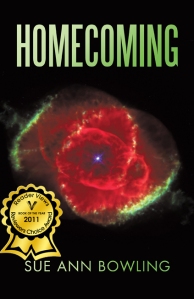What point at the top of the atmosphere gets the most solar radiation on the day of the summer solstice? Would you believe the North Pole?
Yes, that’s right. If the Earth’s pole of axial rotation were perpendicular to its orbital plane, the North Pole wouldn’t get any incoming radiation, and summer solstice would not even be defined. But with an axial tilt of only 23.5°, the pole still gets more radiation over 24 hours on the date of the summer solstice than any other point of the northern hemisphere on any date. Only the South Pole gets more, on the day of the winter solstice.
It doesn’t show up in temperature, first because much of the incoming solar radiation is scattered away during its long path through the atmosphere, and second because the ice and snow at the North Pole reflect much of the radiation back to space. (The second factor may be changing, and this is one of the reasons the Arctic is such a sensitive region.)
But suppose the axial tilt were 90°?
We do have one planet in our Solar System that approaches this: Uranus, with a tilt of 82.14°. But let’s stick with the Earth and assume it has a tilt of 90°. What would the seasons be like?
Summer solstice at the pole would be unbearable. Imagine the sun directly overhead at noon. Now stretch that noon out in time, so that the sun stays overhead for 24 hours. Hot? No place on Earth has that much incoming solar radiation today. Granted there would probably be clouds. In fact, there would probably be hurricane-like monsoonal storms unknown on our planet today. But it would still be hot.
By contrast, the South Pole would be in the middle of a six-month long night. It would have some stored heat left from the intense summer, probably enough to keep maritime climates above freezing. But it would still be dark except for the stars, the moon, and the southern lights.
The equator? At summer solstice, the equator would be pretty chilly. The sun would never rise or set, but just appear to sit at the northern horizon. As time moves toward the autumnal equinox, the sun gradually begins to rise in the north-northeast at 6 am, ride to its maximum height in the northern sky, and then set in the north-northwest at 6 pm. By the equinox, the sun would rise in the east, rise to directly overhead and then set in the west. But at the north pole, the sun has been spiraling gradually down the sky from overhead, until it finally just glides along the horizon at both poles on the day of the equinox, which begins a 6-month night for the North Pole and a 6-month day at the South Pole.
What happens if you add up all of the incoming solar energy over the course of a year? Not too surprisingly, the poles are the winners, with the equatorial regions being relatively cool. Given that water is much better at storing heat than land, the oceans would be warmer at the poles than the equator. Land areas are far more likely to follow a strong annual cycle. High-latitude continental climates would have tremendous seasonal variation, while maritime climates would be much more uniform. Monsoons, which are driven by these land-sea differences, would be extreme. And equatorial climates, which on our earth are primarily wet or dry, would be intensely cold near the solstices and as warm as they get on the equinoxes.
I haven’t actually tried this as a science fiction world—I want my planets to be habitable! But I do have a planet with zero axial tilt—Eversummer—in Tourist Trap. To quote Marna, the planet’s name must have been picked out by a publicity agent!
Note that today is the midsummer blog hop, and you can enter the draw for prizes by commenting. The prize on this blog is a PDF of one of my books, Homecoming or Tourist Trap (your choice.) In addition, anyone who comments on this blog is eligible for the grand prize drawing: 1st Prize – winner’s choice of a Kindle Touch or a Nook Touch
2nd Prize – a library of science fiction romance titles donated by various authors and an Anabanana Gift Card. Most of the books will be in digital format, with one print anthology.
No more than one comment on a single blog will count, but you can comment on multiple blogs to improve your chances.









 Buy Homecoming from iUniverse
Buy Homecoming from iUniverse
















Interesting stuff! I want my worlds inhabitable too, but maybe a space cruise past that kind of world could be written in.
Your post is really interesting. Glad we are tilted like we are.
Its too bad even in fiction we can’t play too far from reality in creating worlds. LOL! Most interesting!
Thanks for the interesting post!
elizabeth @ bookattict . com
23.5 degrees is a cool tilt. Zero, not so much. I’m learning so much this blog hop. Hope my head’s not on an angle where it all slips out, but I will remember two novels with reviewer’s choice awards. Congrats!
Fun and interesting post. That wouldn’t be a bad planet to test special equiptment on. It takes things to the extreme and now those gears are turning. LOL
Thanks for sharing.
LOL…Guess there’s advantages to being “unbalanced”! Great post!
Interesting stuff. Never thought about a 90 degree tilt but glad we’re not at 90 degrees. I live in the desert southwest and temperatures in the low 100’s is hot enough, thank you 🙂
Very interesting post. Thank you for the giveaways and hop!
Interesting facts! Thanks for sharing! 🙂
jessicasubject.writer at gmail dot com
Interesting – I do not have the science background to check out the scientific accuracy of stories I read, so in turn I would like to ask a question. This doesn’t deal with axial tilt, but rather, a recent YA series with its premise an asteroid hitting the moon and knocking it closer to earth. Massive tidal waves, and later, volcanic eruptions bringing a premature winter result. I loved the three books but I loved them for their writing. I wonder what really would happen if such an event occurred..
Not tidal waves but tides. And it would take a very large asteroid hitting the moon in exactly the right direction.
Hey Sue,
It’s one of your friends from SheWrites. Great post. I never thought about the actual science behind the equinoxes. This kind of tilt would also change the symbolism of the summer and winter equinoxes (from appreciating a moment of turning inward or outward to a long meditation on light and darkness). The weather you describe kind of reminds me of Atwood’s Year of The Flood–though the weather is because of the destruction to the environment by humans as opposed to the earth’s tilt.
Habitable planets are good! Very interesting post. Thanks for the giveaway!
I certainly would not want the sun to be at it’s highest point 24 hours a day. Yikes! No, would not like that at all. LOL
Thank you for the informative post and the giveaway opportunity!
Pam
vanillaorchids69(at)gmail(dot)com
Very interesting. Great post! Thanks for sharing and for the fun hop!
shadowluvs2read(at)gmail(dot)com
There does come a point where the poles shift. When that happens it is total cataclysmic disaster. Interesting post.
-Kathleen Scott
Barring a collision, no. The is a small shift, of about 2°, due to the pull of the other planets. It’s part of of the Milankovitch changes. But it’s slow and predictable, with about a 40 thousand year period
Hi first thank you for being part of this great hop. Second WOW!!! you had to think alot to figuire out all this stuff on the radition and axis. It was reall interesting. Thanks joannie jscddmj[at]aol[dot]com
The poles and equator can be figured out by logic. Intermediate latitudes–I actually plotted it once, but it was so long ago I hand plotted it on orange millimeter graph paper! Used it on a doctoral exam once.
Great idea and an interesting poat.
post* Sorry sticky keys.
A tilted planet, I may just have to use that in another space story. 😉
Great post! Thank you so much!
Thanks for the info! I’ve actually wondered about this but never found time to research it. Very interesting. Could be a good planet for characters to be forced to evacuate to, even if temporarily. Lots of nice challenges.
AnnaM.
doxisrcool at aol dot com
Today I’m thankful for the tilt of our planet. 🙂 And you’ve given me ideas for some future scifi stories. Thanks for sharing!
Cheryl
cheryl(at)cherylcorbin(dot)com
Very cool. Kinda glad of the way reality worked out, but it is fun thinking about what could be….
Interesting post.
bn100candg(at)hotmail(dot)com
A very informative and thought provoking post. Thanks
Very interesting, I enjoyed reading this. :o)
liana.brooks1(at)gmail(dot)com
Glad you liked it.
this was super cool thnks for sharing!!
drmgrl99atyahoodotcom
90° isn’t too bad, at least qualitatively. Any other angle takes some hard mathematics.
I know the blog hop is over, but I wanted to come around and post a comment on all my fellow hoppers’ posts. I couldn’t get to a computer while the hop was live.
Interesting thoughts…It makes me wonder if some kind of life could figure out a way to survive. That would be interesting if there was some being that couldn’t survive on a ‘normal’ axis tilt planet like our own. It also makes me wonder about me saying that Earth is a ‘norma’ axis tilt planet…Perhaps it’s not so normal in some other faraway galaxy that we don’t even know about yet. 🙂
Some kind of life, quite probably. Digging deep and hibernating would be one strategy; migration another, and temperature extremes would not be nearly as pronounced in the oceans. But I don’t think humans could live there comfortably.